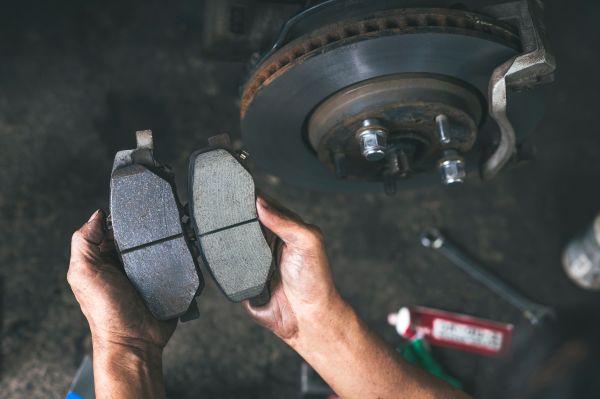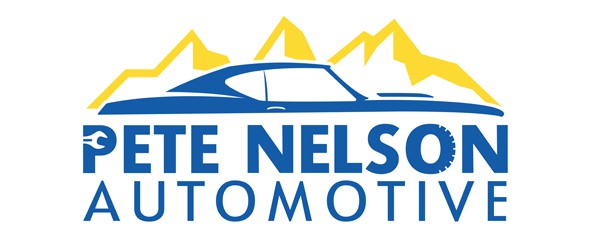 Imagine cruising down the highway when suddenly, you notice a high-pitched squeal every time you brake. This uninvited sound might be more than just an annoyance—it could be a sign that your brake pads and rotors are nearing their end. Brakes are a crucial component of your car, ensuring your safety on the road, and their performance can deteriorate quietly over time.
Imagine cruising down the highway when suddenly, you notice a high-pitched squeal every time you brake. This uninvited sound might be more than just an annoyance—it could be a sign that your brake pads and rotors are nearing their end. Brakes are a crucial component of your car, ensuring your safety on the road, and their performance can deteriorate quietly over time.
Understanding the signs of brake wear can prevent potential accidents and costly repairs. High-pitched noises, grinding sounds, vibrations, and even the vehicle swerving to one side are indicators that shouldn’t be ignored. Other subtle clues include dwindling brake fluid levels, the ominous glow of a dashboard warning light, and a noticeable delay in stopping power.
This article delves into seven critical signs that signal the need for new brake pads and rotors, guiding you to take timely action for your vehicle’s maintenance and your own safety.
1. High-Pitched Squealing Noises: The Warning Whistle
Hearing high-pitched squealing when you press the brake pedal? This noise often comes from a small metal wear indicator. It’s a safety design alerting you that your brake pads are thinning and need replacement soon. While it doesn’t mean immediate brake failure, timely service is crucial to avoid costly repairs.
Remember:
- Not all brake pads have this metal indicator.
- Don’t rely solely on sound for brake inspections.
If new brake pads are installed but the squealing continues, this could mean the rotors are glazed. Glazed rotors might result from excessive heat, aggressive braking, or bad weather conditions, indicating potential damage.
Common Signs of Glazed Rotors:
- Continued squealing
- Vibration in the steering wheel
- Poor brake performance
Addressing these issues quickly can help you avoid more serious damage to the entire braking system. Regular brake checks and understanding these warning signs can prolong the lifespan of your brakes and ensure safe driving. Keep an eye on your driving style and habits to minimize wear and tear on your brake pads and rotors.
2. Grinding Sounds: Metal-on-Metal Distress
Hearing a grinding sound when you brake is a sign of trouble. This noise often means your brake pads are worn down. When pads wear thin, metal-on-metal contact with the rotors can occur. Many brake pads have metal ridges that create a grinding noise as a warning. Ignoring this sound can lead to more damage. The rotors and pad backing plates may come into contact, requiring urgent repair.
Here’s a list of what you should look out for:
- Grinding Noise: Indicates brake pads might be too thin.
- Metallic Growling: Suggests pads are completely worn down.
- Potential Damage: Can destroy rotors and create safety hazards.
- Urgent Repairs: Quickly fixing this can prevent costly rotor replacements.
Driving habits and ignoring these sounds can escalate wear on the brake rotors. This might lead to expensive repairs or replacements. Always pay attention to such alerts to avoid safety risks and costly consequences. Regular brake inspections and timely brake service are key to maintaining your vehicle’s safety.
3. Vibration While Braking: A Shaky Alert
Feeling vibrations in the steering wheel or brake pedal is a common sign that your brakes need attention. When your brake rotors are uneven or warped, the brake pedal might pulse while slowing down. This happens because the brake pads can’t grip the rotor surface smoothly. If your braking system is in good condition, you should experience a smooth stop without shakes or vibrations.
Here’s a quick checklist to understand what could be wrong:
- Pulsating Brake Pedal: Uneven rotor surface.
- Vibrating Steering Wheel: Possible front brake or rotor issues.
- Whole Vehicle Vibration: Rear brake system or rear axle problems.
Ignoring these signs can lead to costly repairs and might affect the entire braking system. Regular brake inspections help catch problems early, improving safety and preventing more severe damage.
|
Symptom |
Possible Issue |
|---|---|
|
Pulsating Pedal |
Warped Brake Rotors |
|
Steering Wheel Vibration |
Front Brakes/Rotor Issues |
|
Vehicle Vibration |
Rear Brakes/Axle Problem |
Regular brake checks and understanding the lifespan of brakes can protect you from metal-on-metal damage and ensure a safe driving experience.
4. Vehicle Pulls to One Side: Uneven Wear Clue
If your vehicle pulls to one side when you press the brake pedals, it could signal uneven brake pad wear. This often means that the brake pads on one side are more worn than the opposite side. Such uneven wear may suggest issues with the brake pads, but problems with the brake caliper can also be a culprit.
Driving style and conditions play a big role in this. For instance, driving on mountainous terrain, aggressive braking, or towing can place stress on your braking system. This stress may lead to uneven pad wear and cause your car to pull to one side. Ignoring this problem might warp your brake rotors, leading to costly repairs.
Here’s a quick checklist to consider:
- Uneven tire pressure
- Faulty wheel bearing
- Worn brake pads
- Issues with brake calipers
- Warped rotors
These factors might contribute to the pulling of a vehicle. Regular brake inspections and brake checks can help catch these issues early, preventing further damage. If your car pulls to one side, address it promptly to maintain safety and prevent bad rotors.
5. Low Brake Fluid Levels: A Hidden Leak
Low brake fluid levels can often signal worn brake pads. As the caliper pistons extend to accommodate this wear, they take up more space in the reservoir. This can lead to a noticeable drop in fluid levels.
If your brake light comes on and the brakes feel less responsive, it might indicate low brake fluid. A potential brake system leak could cause a puddle of fluid under your vehicle. This fluid is usually clear-yellow and has an oily texture.
Low levels might also suggest air in the brake fluid or issues within the hydraulic system. Brake fluid leaks often originate from faulty brake lines, the master cylinder, or caliper problems. These issues cause a hidden drop in fluid levels.
Common Signs of Low Brake Fluid:
- Dashboard brake light illumination
- Less responsive brakes
- Visible fluid puddle under the car
Possible Leak Sources:
|
Source |
Problem Area |
|---|---|
|
Brake Lines |
Cracks or breaks |
|
Master Cylinder |
Seal failure |
|
Caliper |
Piston issues |
Regular brake inspections can prevent costly repairs and ensure safe driving conditions. Check these potential leak sources if you notice any signs of low brake fluid.
6. Brake Warning Light: Dashboard Alert
The brake warning light on your dashboard is an important alert from your vehicle. This light indicates your brake pads might be worn out and need replacing. In cars with electronic wear sensors, the brake warning light will illuminate when the pads reach a critical wear level.
Here are common reasons for a brake light warning:
- Worn Brake Pads: If the pads have reached their minimum safe thickness, the light will come on.
- Low Brake Fluid: The light could also signify a drop in brake fluid levels.
- Worn Components: It might mean other parts of the brake system are worn.
When the brake warning light is illuminated, a professional brake inspection from Pete Nelson Automotive is crucial. Ignoring it might lead to more serious issues.
Quick Facts Table:
|
Issue |
Cause |
Action Needed |
|---|---|---|
|
Worn Brake Pads |
Pads too thin |
Replace brake pads |
|
Low Brake Fluid |
Leak or natural depletion |
Refill brake fluid or check for leaks |
|
Worn Components |
General wear over time |
Inspect and replace needed parts |
If your dashboard warns you about brake issues, address them promptly to avoid costly repairs and ensure safety.
7. Delayed Stopping Power: Reduced Response Time
Delayed stopping power is a serious issue that can arise due to worn brake pads. When brake components like the brake pads wear down, the brakes struggle to slow the vehicle effectively. This can lead to a slower response time when you try to stop.
When the brake response is delayed, you might find yourself slamming on the brakes harder. This not only wears down your tires faster but can also cause unbalanced driving conditions. Overheating and brake fade can further reduce braking power, making it even harder to stop the car promptly.
Signs of Delayed Stopping Power:
- Worn brake pads
- Overheating brakes
- Longer stopping distances
To address these issues, it’s essential to have regular brake inspections. A professional mechanic at Pete Nelson Automotive can assess and fix problems related to reduced stopping power. By keeping up with tailored maintenance, you help ensure your vehicle responds quickly when you hit the brake pedal.
For a quick reference on potential issues, see the table below:
|
Brake Issue |
Possible Effects |
|---|---|
|
Worn brake pads |
Delayed stopping power |
|
Overheating |
Reduced braking effectiveness |
|
Brake fade |
Slower response time |
Remember, proactive brake service not only enhances safety but also helps avoid costly repairs later on.
If you’ve noticed any of these signs, it’s time to take your brake health seriously. Don’t wait until it’s too late—let the experts at Pete Nelson Automotive handle it. We’re proud to be Sun City’s trusted auto repair shop for reliable brake pad and rotor replacements. Stop by our shop or give us a call at 623-974-4723 to schedule your repair or routine maintenance today. Your safety is our priority!


